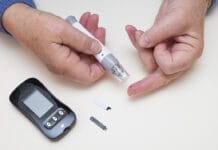Dental hygienists acquire years of education, skills, and training to provide the best of care for patients. Through routine clinical assessments, we know what dental patients need. However, patients do not always agree or accept treatment recommendations, leaving many patients with untreated dental care needs, unfilled schedules at offices, and loss of production opportunities.
Why are patients declining your oral health recommendations?
Patients object to treatment based on how they feel. Susan Weinschenk wrote, “You should just assume that all decisions involve emotions. Rather than just making logical arguments to persuade, you are more likely to persuade people to take an action if you understand how they are feeling about the decision and feed their feeling.”1
These feelings and objections can fall into four categories:
- Time − They feel their schedules are too busy.
- Cost − They feel they can’t afford it.
- Fear − They feel it will be painful.
- Value − They do not feel the need.
Let’s consider the first three common objections we hear most often − time, cost, and fear. These objections have a great impact on whether a dental patient accepts or declines treatment recommendations. Yes, a patient must make time in their schedule to have the treatment completed. They may have some financial responsibility, and they may be worried about experiencing pain from the procedure.
However, the value objection has the greatest effect on patient acceptance. In addition to being healthcare providers, we are also a part of the service provider industry. Our role as service providers is to offer patients treatment, scheduling, and payment options to fit their needs and areas of concern. For example, a patient may be interested in whitening their teeth more than having to get a broken tooth restored. By having a structured and thoughtful response to their treatment objections, we can hopefully overcome their perceived barriers to make care more affordable, efficient, and comfortable. When a person feels and understands the need for your treatment recommendations, they usually will not object to it.
Responding to Objections
Now, let’s build a thoughtful response based on a patient’s objection. Avoid rambling and lecturing your patients. It is a better approach to engage them in a dialogue about their objections. Talk to them and not at them.
Here is a simple approach you can take that will organize your thoughts strategically.
- Acknowledge: Recognize the patient’s concern and do not judge them.
- State objective: Be precise, positive, and confident when you recommend the treatment.
- Present argument: Confidently turn the patient’s concern into a reason to accept treatment by personalizing it to their dental care needs. For example, if pain is the concern, alert the patient that there are options to anesthetize the patient to make them comfortable during the procedure.
- Conclusion: Restate your objective with enthusiasm. For example, you can say, “Mrs. Sue, I understand that you are afraid of the possible pain the treatment may cause. The good news is that we have options to help alleviate your concern. We will apply both topical and local anesthetic, along with providing you nitrous oxide gas that will make your care more comfortable. How does that sound?”
- Pause: Allow the patient to respond with additional questions, remain professional, and do not interrupt them. Patients will feel respected and like they are being heard when you allow them the opportunity to make an educated decision. This will lead to them accepting your treatment recommendations.
Fluoride and Mr. Jones
Here is an example of how I have communicated the importance of maintaining routine dental care with a patient. Mr. Jones is a 70-year-old retiree who was in for his scheduled three-month periodontal maintenance treatment. He has a medical history of diabetes and high blood pressure. Mr. Jones has no major complaints other than experiencing dry mouth and sensitivity periodically.
I presented Mr. Jones with his treatment plan for the day, which also consisted of a fluoride treatment as part of periodontal maintenance. Mr. Jones replied, “I don’t need fluoride, and I can’t afford to come every three months.”
What did I do? How did I overcome not one but two objections?
First, I asked Mr. Jones to tell me more, where I listened to find out what was really important to him. The conversation was a two-way street. In order for me to get him to consider what I had to say, I needed to show him the respect and interest to hear him out.
Once he finished explaining, I addressed his concern that he was on a fixed income and could barely afford his prescription medicines. I let him know that the fluoride will help prevent cavities, reduce sensitivity, and help remineralize his teeth from the dry mouth that he is experiencing from his medications.
Next, I addressed his second concern as I explained the importance of maintaining his dental health as it is an essential factor in his overall health. Due to his financial restraints, we could move him to a four-month recall for the next visit and apply his fluoride at every other appointment. Mr. Jones accepted the fluoride and was good with the four-month perio cycle.
Just a few minutes of discussion turned Mr. Jones into agreement with the treatment plan. The conversation had a great impact on our patient-clinician relationship. It built trust and value in the services being recommended and provided. I was able to turn his “no” into a “yes.” This will give us an opportunity to still see Mr. Jones frequently, maintain his oral health, and the patient could save some money too. It was a true win-win.
Before you accept “no,” remember to hear out the patient’s objection, listen actively, acknowledge their concerns, confidently provide education and personalized information, and why your recommendation is a solution or prevention for their care. When you show the value in a service, the patient will feel and understand the importance and will most likely move forward with treatment.
Before you leave, check out the Today’s RDH self-study CE courses. All courses are peer-reviewed and non-sponsored to focus solely on high-quality education. Click here now.
Listen to the Today’s RDH Dental Hygiene Podcast Below:
Reference
- Weinschenk, S. (2019, February 7). How People Make Decisions. Smashing Magazine. Retrieved from https://www.smashingmagazine.com/2019/02/human-decision-making/












